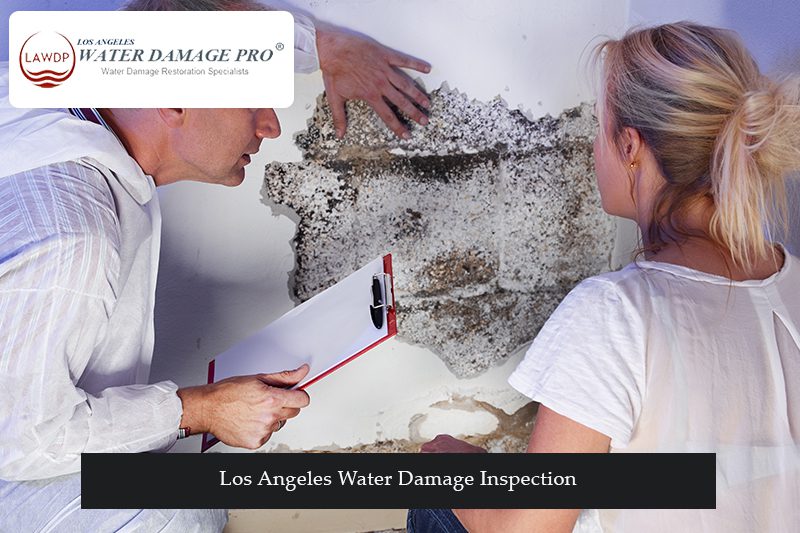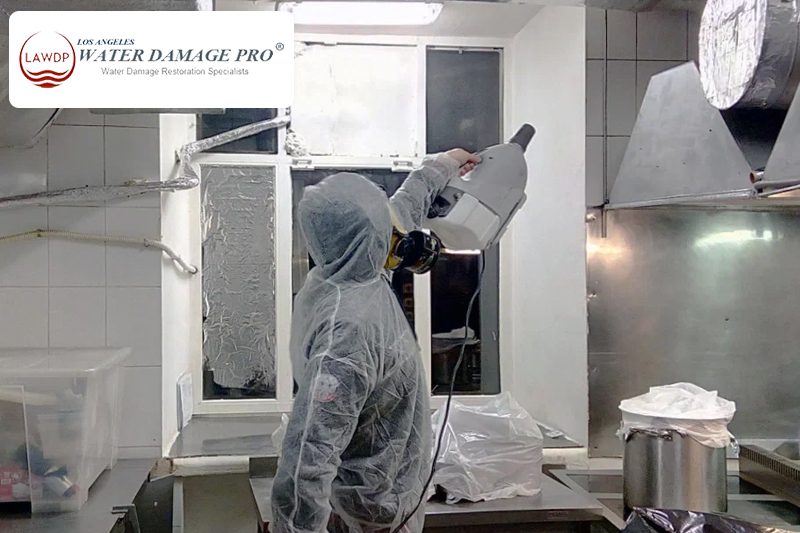Los Angeles Water Damage Inspection
A Los Angeles water damage inspection will let you know if your home has potential water damage threats and what to do if that is the case. Carrying out such an inspection may not be an obvious process, and that is why Water Damage Restoration Pro is here to streamline this process for you.

We have the tools, the experience, and the skills to inspect your home for water damage. Don’t wait till water damage affects your belongings or your house structure; work with us and let us help you mitigate the problem.
Signs and Symptoms of Water Damage
When carrying out a water damage inspection, one of the major steps is looking for signs and symptoms of water damage. These signs and symptoms can vary depending on the extent and source of the water. Here are some common signs and symptoms that indicate the presence of water damage.
| Discoloration | Yellow, brown, and watermarks on the walls, ceiling, and floss indicate prolonged moisture exposure |
| Odor | A musty or damp smell in specific areas, such as the bathrooms, can be a sign of water damage and potential mold growth. |
| Mold and mildew | The presence of mold or mildew indicates a moisture-related problem and a potential water damage issue. |
| Peeling or bubbling paint | Peeling, bubbling, or warping of paint in areas prone to moisture, such as the bathroom or kitchen, is a sign of water damage. |
| Dripping or leaking sounds | Audible dripping sounds may suggest hidden water damage even if you can’t locate the source. |
| Increased utility bills | A huge spike in your water bill could indicate a water leak or plumbing issue, leading to water damage. |
| Presence of standing water | Obvious signs of water accumulation on the floor are clear indicators of water damage. |
Assessing the Extent of Water Damage
During your Los Angeles water damage inspection, you should expect the inspector to conduct a visual inspection which involves looking for visible signs of water damage.
Moisture detection will also be carried out using moisture sensors to help identify areas of hidden moisture and the extent of water infiltration.
A structural inspection is also done to identify signs of compromise. This may involve checking the walls, ceilings, and floors for cracks, sagging, or bowing that may indicate structural damage caused by water.

Common Areas Prone to Water Damage
Some areas are more prone to water damage than others. The more an area is exposed to water, the more likely it will experience water damage. Here are some common areas that are usually prone to water damage.
- Bathrooms
- Kitchen
- Laundry area
- Roofs
- Plumbing system
- Attics
- Exterior wall
Contact a Los Angeles Water Damage Inspection Expert
If you suspect water damage in your home, don’t panic. Reach out to us and let our skilled and friendly team pay you a visit and inspect your home.
Getting an inspection early on can save your home from structural damage and can save you the hassle of getting your house repaired due to something you could have prevented a long time ago. Contact us today, and schedule an inspection.
FAQs
The duration of a water damage inspection varies depending on the size of the property, the extent of the suspected damage, and the complexity of the situation. In general, a water damage inspection can take anywhere from 30 minutes to a few hours.
Untreated water damage poses several risks, such as structural damage, electrocution, pest infection, and mold growth. It can also lead to the growth of harmful bacteria, viruses, and fungi.
The frequency of water damage inspections for your home can depend on various factors, including the location of your property, the climate in your area, and any previous incidents of water damage. However, as a rule of thumb, you should have your home inspected for water damage at least once a year.
An inspection report should describe the damage, recommendations for necessary repairs, mitigation measures, and health and safety precautions if any potential hazards are found.


